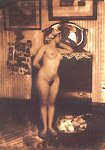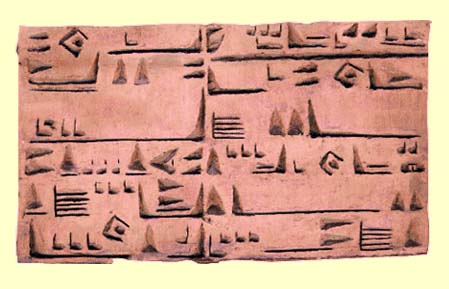 It is difficult in the Dada context of ambiguity and paradox to understand what was meant by the word ArT. It is almost as if everybody held to their own private meaning, yet there was a certain consistency. In the manifesto of 1918 Tzara wrote "AII pictorial or plastic work is useless . . ." ; but Schwitters affirmed that ". . . everything the artist spits is art". Disillusionment was the ultimate in nearly everything that Dada represented. Richter pointed out that art must be "set on its way towards new functions which could only be known after the total negation of everything that had existed before until then: riot, destruction, defiance, confusion. The role of chance, not as an extension of the scope of art, but as a principle of dissolution and anarchy. In art, anti-art".
It is difficult in the Dada context of ambiguity and paradox to understand what was meant by the word ArT. It is almost as if everybody held to their own private meaning, yet there was a certain consistency. In the manifesto of 1918 Tzara wrote "AII pictorial or plastic work is useless . . ." ; but Schwitters affirmed that ". . . everything the artist spits is art". Disillusionment was the ultimate in nearly everything that Dada represented. Richter pointed out that art must be "set on its way towards new functions which could only be known after the total negation of everything that had existed before until then: riot, destruction, defiance, confusion. The role of chance, not as an extension of the scope of art, but as a principle of dissolution and anarchy. In art, anti-art".
Though today we can recognize certain stylistic qualities which immediately identify a particular painting as Dada, at the time the imagery of individual artists was diffuse and widespread. Some work were clearly rooted in Expressionism, others demonstrated an interest in machine images, Geometric Abstraction, Constructivism and De Stijl, Conceptualism and even in an informal abstract manner which pre-dated Tachism by over thirty years.
With true Dada irony, flimsy, gratuitous or violent work, which was considered as "anti-art", as, in Arp's words, ". . . art without sense . . . without meaning, as Nature is", has acquired with the passage of time an aesthetic quality. A curious process seems to take place when an object is placed in a museum or gallery environment. The readymades of Duchamp, originally objects of great ironic or shock value, can now be seen as extremely beautiful in the conventional sense of the balanced relationships of plastic and formal elements. Schwitters's collages of junk, rubbish and scraps of paper now seem to possess a sustained and intense Iyricism unequalled by any other modern artist.
Perhaps, without meaning to, the Dadaists did create art. One wonders what would be the reactions of the more iconoclastic, had they survived, to seeing their paintings, sculptures and objects enshrined in museums and regarded as historical examples of a cultural tradition. Indeed, did they turn over in their graves? For Dada did contribute an aesthetic, extend our collective visual and perceptual experience, broaden our mental horizons. In the act of attempting to "humiliate" art, through the idea of the Gesamtkunstwerk, the "total work of art", the beginnings of what we would now call multi-media art, inherited from Kandinsky, the ordinary and everyday was imbued with aesthetic significance.It is more specifically in the techniques that the Dadaists used, and the philosophical implication inherent in these techniques, that Dada produced its unique contribution; a contribution that can be seen as not so much merely adding to a tradition, as shifting the whole mainstream, as it were, into a new riverbed.
 It is difficult in the Dada context of ambiguity and paradox to understand what was meant by the word ArT. It is almost as if everybody held to their own private meaning, yet there was a certain consistency. In the manifesto of 1918 Tzara wrote "AII pictorial or plastic work is useless . . ." ; but Schwitters affirmed that ". . . everything the artist spits is art". Disillusionment was the ultimate in nearly everything that Dada represented. Richter pointed out that art must be "set on its way towards new functions which could only be known after the total negation of everything that had existed before until then: riot, destruction, defiance, confusion. The role of chance, not as an extension of the scope of art, but as a principle of dissolution and anarchy. In art, anti-art".
It is difficult in the Dada context of ambiguity and paradox to understand what was meant by the word ArT. It is almost as if everybody held to their own private meaning, yet there was a certain consistency. In the manifesto of 1918 Tzara wrote "AII pictorial or plastic work is useless . . ." ; but Schwitters affirmed that ". . . everything the artist spits is art". Disillusionment was the ultimate in nearly everything that Dada represented. Richter pointed out that art must be "set on its way towards new functions which could only be known after the total negation of everything that had existed before until then: riot, destruction, defiance, confusion. The role of chance, not as an extension of the scope of art, but as a principle of dissolution and anarchy. In art, anti-art".


















